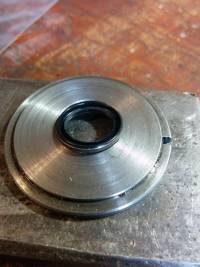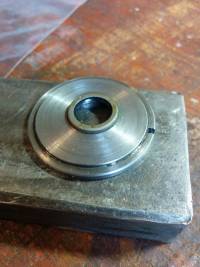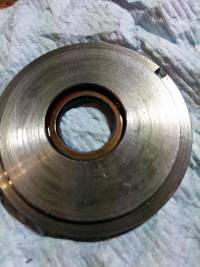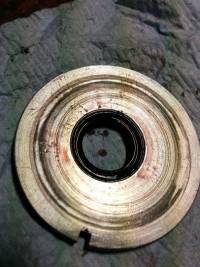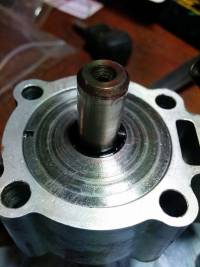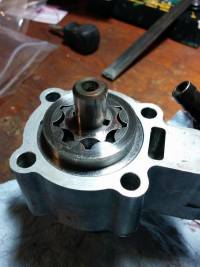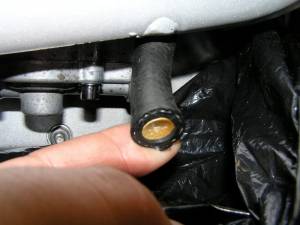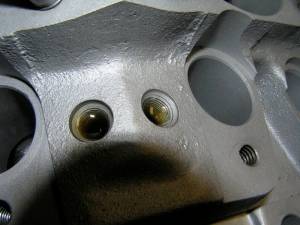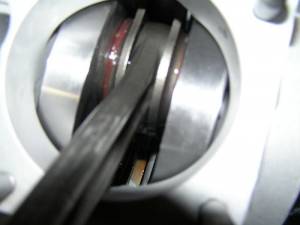Table of Contents
This is an old revision of the document!
IH: Oiling & Lubrication - Sub-03H
77-85 Oil Pump Assembly
(page under construction)
Build Kits / Parts
No build kit was ever assembled / sold from the factory according to the parts catalogs. So individual pieces were sold.
You can search individual part numbers on the net for seals and gaskets.
Or you can search for aftermarket parts / kits.
MAKE SURE THE SEALS MATCH YOUR PUMP when using aftermarket parts.
Current “kits” tend to have “current parts” in the them.
The “current” oil pump is the L83-85 pump (sold for 77-85 when the 77-E83 pump was discontinued).
If you have the older style pump, the L83-85 seal between the plates won't work on the earlier plate as it is pressed into it's matching plate.
Or James Gaskets makes a seal kit (JGI-77-XL).
- It appears to come with:
- Pump to case gasket
- Pump cover O-ring
- (2) separator plate seals (77-E83 and L83-85)
- Both check valve O-rings
- Retainer ring
- Pump housing pin
Outer plate Seal (12036A)
Installing Oil Pump
Once the oil pump is installed and tightened up, the gears will be hard to turn by hand.
This is because of the spring between the upper and lower plates.
In fact, you can use a couple nuts and bolts to clamp the cover to the housing just holding the pump in hand (all internals installed).
And it will be difficult (but doable) to turn.
If you were to remove the spring between the plates, the gearshaft would be easily turned with one finger.
But you can't run these type pumps without the spring between the plates.
The pump housing and cover are both machined to include that spring washer..
Smoke Testing the Oil Supply
This is not required but doesn't sound like a bad idea to test the oil pump and supply feed passages on a new engine or pump build.
It has more advantages for 57-76 motors since you have to pull the engine to replace the oil pump if something is wrong.
But it also isn't a bad idea for 77-up engines. As the article says, cheap insurance.
Plus it'll let you know if your feed and return lines are crossed before it's too late to do anything about it.
This is a excerpt of an article from Ironheacycle.com 2)
I hook up the oil pump supply line and fill it with engine oil, sometimes a funnel stuck in the end of a hose is all you need, in this case I hooked it right up to the oil tank. Then I grab the rods and spin the motor over until oil wells up in the holes that go to the rocker boxes. This makes sure that the pump is working and that all the oil passages are free and clear. Sometimes it is hard to make a new motor start pumping oil, in those cases I put an air hose on the oil tank and pressurize the tank with maybe three or four PSI out of my air hose to force oil into the supply line. I had to do that on this motor. It is not unusual. After oil wells up into those rocker box supply holes, I plug them. I usually just stick an old ball bearing in the fitting for the rocker supply line. Then keep spinning the motor, after just a little bit you should see oil coming out from around the connecting rods. If you don't you've got a problem. And as bad as it is to find that out now, it is a lot better to fine out now than after you've fired and fried the engine. All the oil you see around these rods is oil that got there by me spinning the engine over just by grabbing the ends of the connecting rods. I also dumped a little oil into the cam chest through the lifter block holes, after just a little spinning oil started being pumped out of the return to the tank fitting, so now I know the scavenge side of the pump is also working. I do this procedure on every engine I have the heads and barrels off on. It is cheap insurance to avoid costly problems down the road.

